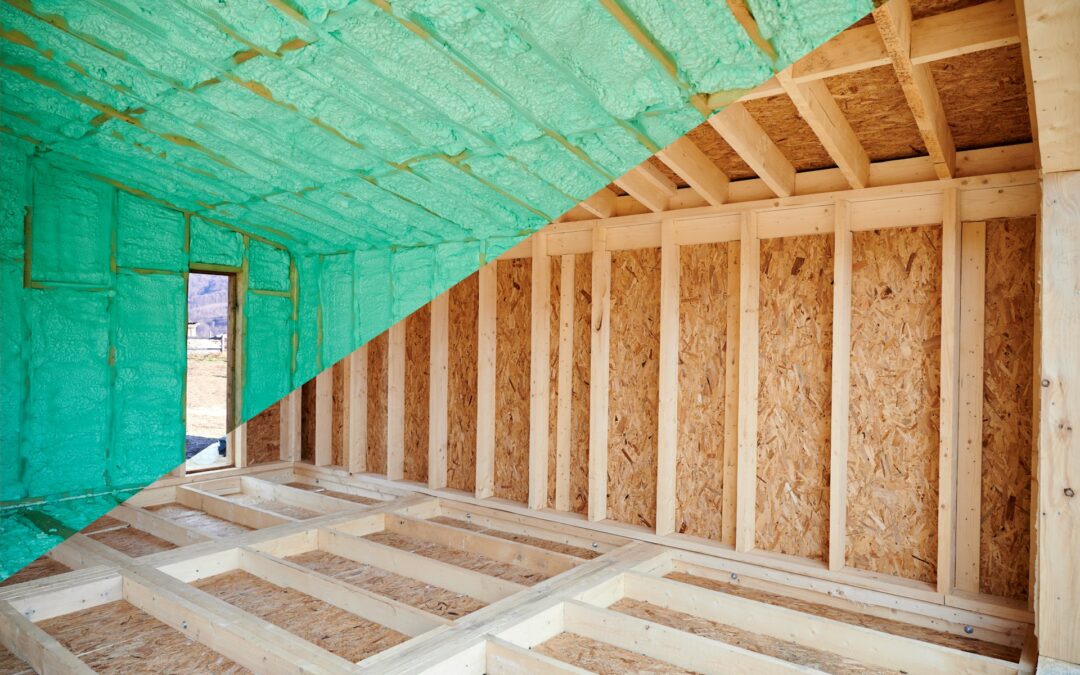Ever found yourself puzzled by certain rooms in your home feeling like a different climate zone? Uneven room temperatures can be more than just annoying; they might also impact your comfort and the way your home functions. One room might feel cozy and warm, while the next could be chilly and uncomfortable. This challenge can arise from several factors, leaving homeowners scratching their heads.
Foam insulation could be the solution you didn’t know you needed. By sealing gaps and providing top-notch thermal barriers, foam insulation works wonders in stabilizing room temperatures. It’s like giving your home a cozy sweater that fits perfectly, keeping everything at an even, comfortable temperature. As you take on the issue, understanding the common causes of uneven temperatures can help you tackle the problem efficiently.
Common Causes of Uneven Room Temperatures
Uncovering why some rooms seem to never hit the right temperature often leads back to a few familiar culprits. Here are some key factors:
1. Poor Insulation and Air Leaks: When your home’s insulation isn’t up to par, or if there are undiscovered leaks, heat can escape from where you want it most. Imagine a drafty window left open during winter; it lets heat slip away effortlessly. Foam insulation tackles this by sealing off tiny air passages, ensuring treated air stays inside.
2. Outdated or Insufficient HVAC Systems: Older systems might struggle to keep up, leading to some rooms getting more air than others. Regular maintenance checks can prime these units for the peak times of the year, but sometimes, replacement is necessary for uniform comfort.
3. Other Structural Issues: Beyond insulation and air control systems, structural quirks can affect temperatures too. Homes settle over time, which can unwittingly shift things. Uneven floors, expansions, or even that extra room you added on could impact how air circulates, creating spots that never seem just right.
By understanding these elements, you can pinpoint why temperatures vary across rooms. Once you identify what’s affecting your home’s comfort, making the right adjustments becomes far more manageable. In the next sections, we’ll dig into what makes foam insulation a fantastic choice for tackling these common problems.
How Foam Insulation Helps
Foam insulation does more than just fill gaps; it really transforms how a house feels. Its unique ability to expand and fit into tight spaces is what makes it standout. This material forms a snug barrier that blocks air and moisture leaks, ensuring rooms maintain consistent temperatures. When it comes to thermal regulation, foam insulation has got you covered, keeping the warmth inside during cold months and maintaining cool air during the hot times. This means you’re not constantly adjusting the thermostat, leading to a more tolerant and relaxed home environment.
One common worry people have is the cost of foam insulation. While the upfront investment might seem considerable, it’s important to remember the long-term savings. By efficiently stabilizing temperatures, foam insulation can significantly reduce energy bills. Think of it as an investment that pays off as lower heating and cooling costs down the road. Deciding to upgrade your insulation might be the move that transforms your home comfort and energy efficiency over time.
Signs You Need Foam Insulation
Wondering if foam insulation is right for your home? Look out for these signs:
- Drafty Areas: If you feel unexpected chills when walking past windows or doors, your current insulation might be lacking.
- Temperature Discrepancies: Drastic temperature differences between rooms could indicate an issue with how well-sealed your home is.
- High Energy Bills: A sudden spike in your utility bills might be a red flag that your home is losing heat or cool air.
Understanding these clues can help you decide if it’s time to consider foam insulation. By taking action, you’re likely to enjoy a noticeable difference in comfort and savings.
Steps to Install Foam Insulation
Installing foam insulation isn’t a task to tackle on your own. It’s a job that requires precision and expertise to ensure it’s done right. Here’s a simple outline of what the process involves:
1. Assessment: A professional will evaluate your home to determine the areas that need insulation.
2. Preparation: This step includes clearing the areas where foam will be applied and protecting other parts of your home from overspray.
3. Application: The foam insulation is sprayed into cavities, where it expands and hardens to form a protective barrier.
4. Inspection: After the installation, a thorough check ensures everything is in place and no spots were missed.
Hiring trained professionals guarantees the job’s done safely and effectively. In Wills Point, factors like your home’s size and design will influence the cost, but the investment promises worthwhile returns in comfort and efficiency.
Enjoying a Comfortable Home Year-Round
Addressing uneven temperatures with foam insulation leads to more than just a comfortable home; it’s like the gateway to a more efficient and cost-effective space. When places in your house finally feel equally welcoming, you’ll wonder why you didn’t do it sooner.
The consistent temperatures make life at home much more enjoyable, free from the discomfort of fluctuating room climates. And as energy bills become more manageable, you’ll appreciate the decision even more. Taking this step isn’t just about fixing current issues, but also about securing long-term peace of mind and efficiency.
Is your home in need of a temperature makeover? Don’t wait any longer to enjoy the benefits of foam insulation. Discover how managing foam insulation cost with Southern Twist Spray Foam can lead to enhanced comfort and reduced energy bills in your Wills Point home. Start your journey towards a more comfortable living environment today.

